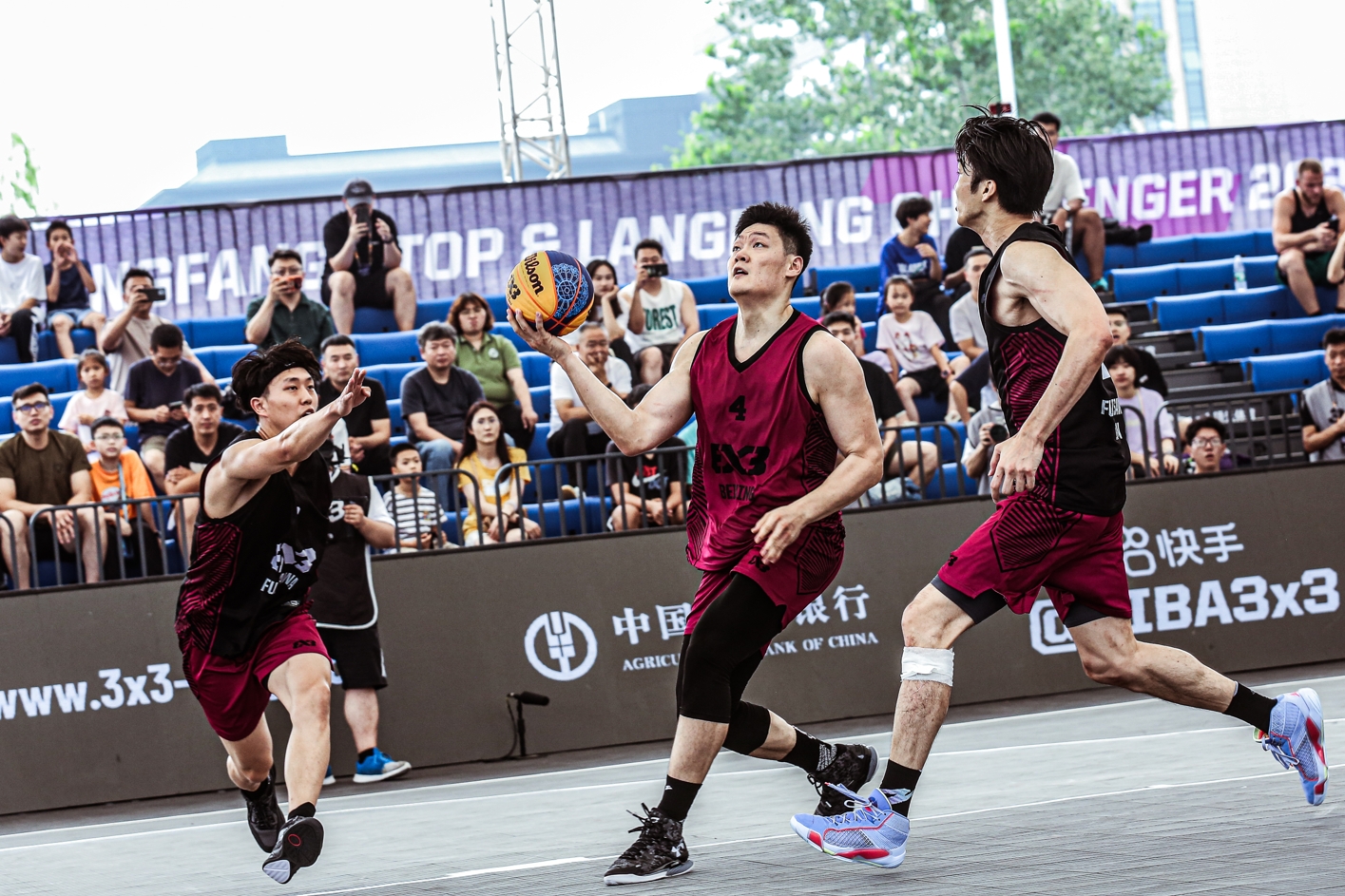There is no doubt that increasing your vertical jump is crucial to your success in volleyball. The ability to jump higher allows you to spike the ball with greater power, block your opponent’s shots at the net, and excel in all aspects of the game by hitting the ball with greater power.
The vertical jump is influenced by many factors, including genetics and athleticism; however, specific training techniques and exercises can help you improve your jump height by using specific training techniques and exercises.
In this article, we will explore proven strategies and exercises to increase your vertical jump for volleyball. Whether you’re a beginner or an experienced player looking to take your game to the next level, these tips will help you reach new heights on the volleyball court.
Let’s talk about how to increase your vertical jump for volleyball.
Understanding the Importance of a Great Vertical Jump in Volleyball
Volleyball is an exhilarating sport that requires a unique blend of skill, athleticism, and teamwork. Undoubtedly, one of the most crucial requirements among these skills is to have a great vertical jump.
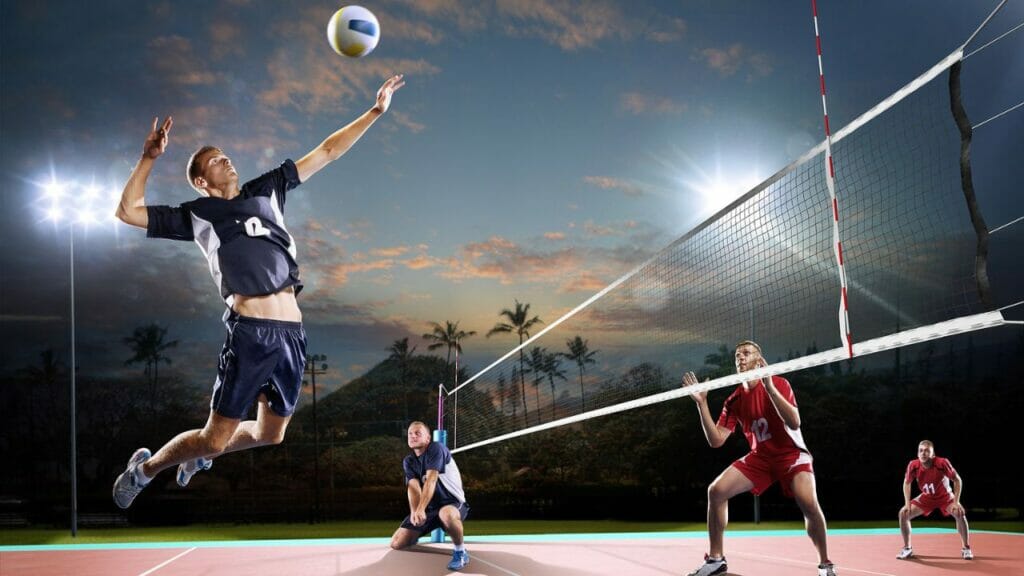
You can make a huge difference in your performance on the court if you have a powerful and quick jump. This section will explore the importance of a great vertical jump in volleyball.
1. Spiking and Blocking
Spiking and blocking are vital elements in volleyball, and the ability to do both effectively is one of the most important factors. A high vertical jump allows you to reach greater heights, giving you an advantage over your opponents.
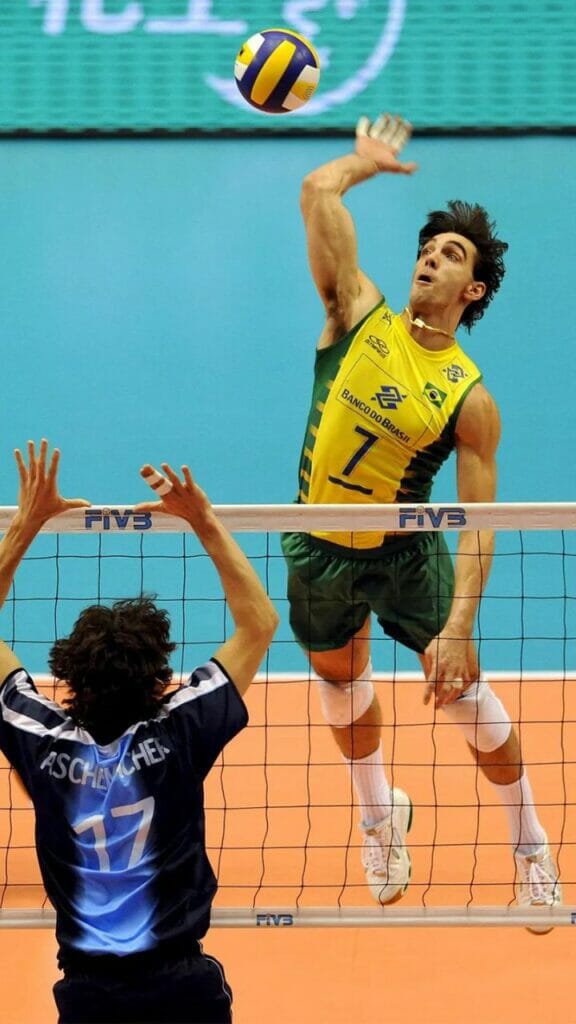
When spiking, a higher jump enables you to hit the ball at a steeper angle, making it harder for the opposing team to defend against. Similarly, when blocking, a strong vertical jump allows you to reach higher and block the ball at the net height, disrupting the opposing team’s attack.
2. Defensive Play
It is important to have a good vertical jump not only for offensive plays but also for defensive ones. Whether diving to save a ball from hitting the ground or leaping to make a dig, a higher vertical jump allows you to cover more ground and make impressive defensive plays.
It is important to keep in mind that jumping higher as a defender will enable you to reach and retrieve balls that would otherwise be hard to reach.
3. Athleticism and Flexibility
A strong vertical jump in volleyball is not only about height but also about overall athleticism and agility. Several factors contribute to a higher jump, including explosive power, core strength, and quick footwork.
You are simultaneously working on developing these essential athletic qualities by training to improve your vertical jump. This will enhance your jumping ability and improve your overall performance on the court.
4. Mental Advantage
Having a great vertical jump can also provide a psychological advantage. When you can consistently outjump your opponents, it instills a sense of fear and intimidation.
Your opponents will be more cautious in their attacks, giving you the upper hand. Additionally, a high vertical jump can boost your confidence, knowing that you have the ability to reach higher and make impactful plays.
Remember, improving your vertical jump takes time and consistent effort. Be patient and dedicated to your training, and you will see significant improvements in your performance on the volleyball court.
Now that we understand the importance of a great vertical jump in volleyball let’s next section explore some tips on how you can improve yours:
Plyometric Training for Explosive Jumping Ability
Boosting your vertical jump is essential for athletes, especially in sports like volleyball. One of the most effective ways to achieve this is through plyometric exercises.
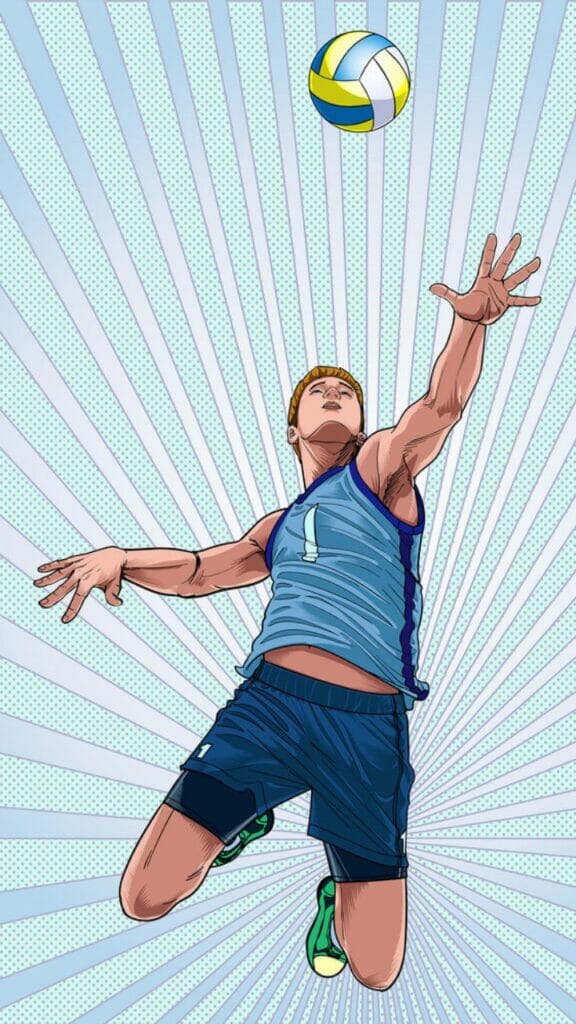
It is essential to train your legs, hips, and abs in order to generate power and achieve a higher jump, but these exercises focus on training your legs, hips, and abs instead. You can incorporate various plyometric exercises into your training routine if you want to increase your leap.
Ideally, it is recommended that these exercises should be carried out at a moderate pace and with medium intensity to maximize the benefits. This combination will help you develop explosive strength and improve your jumping ability.
Aim to incorporate plyometric exercises into your strength training thrice a week for optimal results. Consistency is key when it comes to reaching your sports performance goals.
Medicine Ball Throws.
One highly effective plyometric exercise is Medicine Ball Throws. This exercise targets both your arms and legs, providing a comprehensive workout. Using a medicine ball adds an extra challenge as it can be moved rapidly in multiple directions due to its weight.
This exercise helps build power in your upper and lower body, enhancing overall strength and explosiveness. As part of your training routine, you may consider incorporating Medicine Ball Throws into your training routine to enhance your vertical jump performance.
Regularly practicing this exercise can enhance your ability to generate power and improve your jumping technique. Remember to perform these exercises with proper form and technique to minimize the risk of injury.
Squat Jumps
There are many plyometric exercises that can improve your vertical jump, which works very well, but one of the best is squat jumps. A number of major muscle groups are targeted in this exercise, as well as the ability to build reactive strength and endurance in your lower body.
By adding squat jumps into your training routine, you’ll be able to develop the explosive power needed for higher jumps on the volleyball court. To perform squat jumps, start by standing with your feet shoulder-width apart.
Lower yourself into a squat position, keeping your back straight and your knees behind your toes. From this squat position, explosively jump upwards, extending your hips, knees, and ankles. As you jump, swing your arms upwards to gain force.
Land softly back into the squat position and immediately repeat the movement for a desired number of repetitions. Remember to maintain proper form throughout the exercise.
Ensure that your chest is up, your back is straight, and your core is engaged during the exercise to ensure maximum energy transfer and minimize the possibility of injury.
Adding squat jumps into your training routine and other plyometric exercises will help you develop the necessary strength and power to increase your vertical jump.
Consistency and proper technique are key, so make sure to progressively challenge yourself and gradually increase the intensity and speed of your workouts.
Broad jumps
Broad jumps are one of the best plyometric exercises to increase your vertical jump. This exercise engages your entire body, providing a comprehensive workout that strengthens key muscle groups while also enhancing coordination and balance.
By performing broad jumps regularly, you can develop increased power in your legs and hips, allowing you to generate greater force when jumping. Remember to maintain proper form throughout the exercise. Your back is straight, and your knees are in line with your toes.
This will help prevent injuries and ensure that you’re effectively targeting the muscles needed for an improved vertical jump. Including broad jumps into your plyometric training routine is important since they can give you significant benefits in increasing your vertical jump for volleyball.
However, it’s important to remember that consistency and proper technique are key. Be sure to warm up properly before each session, and gradually increase the intensity and difficulty of your workouts over time.
Depth Jump
It is well known that one of the best plyometric exercises that can greatly improve your vertical jump is the Depth Jump, which is also one of the most effective. This exercise involves jumping off a platform or box, landing on the ground, and then jumping back onto the platform or box again as soon as you land.
It is important to perform this exercise slowly but with maximum intensity, as this will help you generate greater force production, enhance motor control and coordination, and develop more explosive strength during both the take-off and landing phases.
Incorporating Depth Jumps into your training routine can significantly improve your jumping efficiency and safety. This exercise targets the muscles and movements specific to jumping, allowing you to develop the necessary strength and power to propel yourself higher off the ground.
This exercise involves jumping off a table or box and immediately jumping again as soon as you land. It is important to perform this exercise slowly but with maximum intensity, as this will help you generate greater force production, enhance motor control and coordination, and develop more explosive strength during both the take-off and landing phases.
There is no doubt that plyometric exercises like Depth Jumps are highly effective, but it is essential to keep in mind that they also place a significant amount of stress on your joints and muscles during the exercise.
Therefore, it is crucial to ensure proper form and technique to minimize the risk of injury. If you are new to plyometrics or have any underlying health concerns, seeking guidance from a qualified trainer or coach is recommended.
Using plyometric exercises, such as Depth Jumps, in your training routine can be a game-changer for improving your vertical jump in volleyball.
Split Squat
Another effective exercise is Split Squat Jumps. With this exercise, you will develop the strength and power necessary to perform single-leg jumps while allowing yourself the flexibility to move in various directions, including forwards and reverse, as well as sides and sides of the body.
Incorporating these movements creates a dynamic program that can significantly increase your power output and overall jumping ability. Maintaining a moderate intensity and high speed while performing a plyometric exercise is extremely important.
This combination ensures you are challenging your muscles and activating the explosive power needed for vertical jumps. The goal is to push yourself while maintaining proper form to maximize the benefits of these exercises.
It is important to warm up properly before starting plyometric exercises to make the exercises more effective and to increase their intensity as you go along gradually. It is best to start out with shorter distances or lower box heights, and as you gain strength and technique, you can gradually increase them.
Remember, consistency is key when it comes to plyometric training. Your vertical jump and overall athletic performance will improve over time due to the training you are receiving.
Ultimately, plyometric exercises are an excellent way to increase your vertical jump for volleyball. Incorporating exercises such as Split Squat Jumps and other plyometrics into your volleyball vertical training routine is important to target and strengthen the muscles required for a powerful jump.
Remember to maintain medium intensity and high speed while performing these exercises and gradually increase the difficulty as you progress. Stay consistent with your training, and you’ll see improvements in your vertical jump in no time.
Jumping rope
Jumping rope may seem like a simple activity, but when it comes to fitness, it can be one of the most effective activities. Not only does jumping rope provide a great cardiovascular workout, but it can also help increase the size of your calf muscles.
Jumping rope at a fast speed for 30 seconds as a part of your daily exercise routine can result in significant improvements when you incorporate it into your exercise routine. Undoubtedly, jumping rope is one of the best cardio exercises you can do.
Jump rope can also help tone and build your calf muscles and improve your general health. The repetitive jumping motion engages the muscles in your lower legs, particularly the calves. Over time, this can lead to increased muscle size and improved definition.
Jumping rope is one of the best plyometric exercises to enhance your vertical jump, and you can take your volleyball game to the next level by practicing it regularly. Remember to perform these exercises with the right intensity and speed, and be consistent in your training.
Resistance training.
Plyometrics aren’t the only way to increase your strength, increasing your vertical jump. Resistance training is also a great way to build strength. There are several resistance exercises that can be incorporated into your routine to target your lower body muscles.
Leg presses, Bulgarian split squats, calf raises, and deadlifts are a few exercises that can help you build lower body strength. It is important to begin your resistance exercises with weights that allow you to perform a maximum of 10 repetitions for every exercise and no less than 5 repetitions for every exercise to get the most out of them.
As you progress and become stronger, gradually increase the weight to continue challenging your muscles. It is recommended to initially incorporate this type of training once a week, gradually increasing the frequency as your body adapts to reduce the risk of injury.
What is the Proper Way to Do a Vertical Jump?
There is no doubt that vertical jumping is an important skill in volleyball, as it allows players to reach balls that are outside their normal zone of operation. Mastering the correct technique for vertical jumping can greatly enhance your performance on the court.
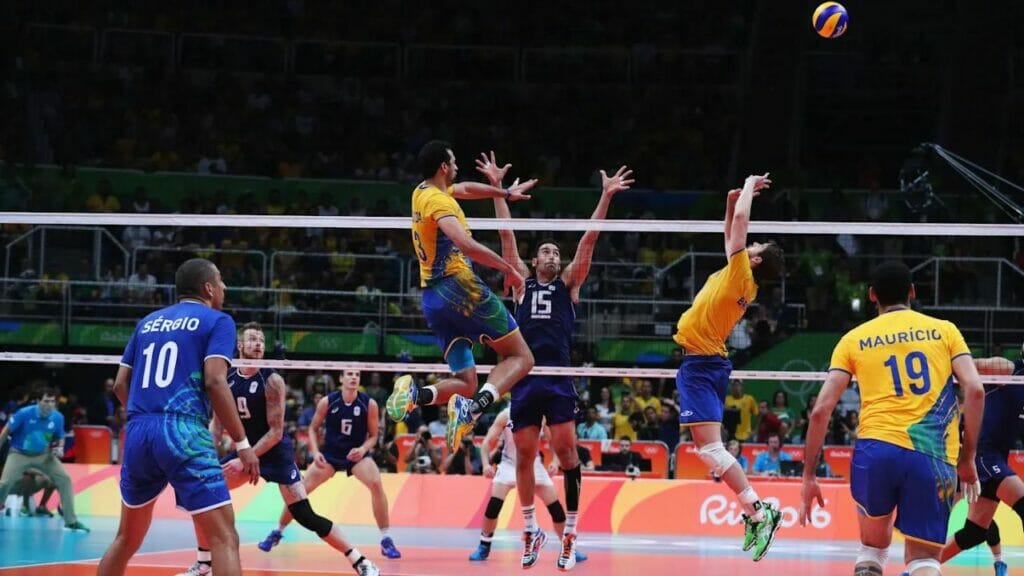
To help you improve your vertical jump, here are some useful tips to keep in mind. The most important thing to remember before engaging in any intensive physical activity, including vertical jumping, is to warm up before beginning.
Take about 10 minutes to warm up your body with light exercises such as jogging or jumping jacks. This prepares your muscles for the volleyball workouts to jump higher and reduces the risk of injury.
Choosing the right surface is one of the most important things you should consider when practicing vertical jumping. Opt for soft surfaces like carpet or grass rather than hard ones like concrete or asphalt.
Soft surfaces offer more cushioning, which can help reduce the impact on your joints and minimize the risk of injury. VMKON Sports Courts provide a wide range of innovative and high-quality flooring solutions for indoor and outdoor courts.
VMKON Sports Courts are designed to deliver excellent traction. This is crucial for any athlete as it helps prevent slips and falls, allowing you to move confidently and freely on the court.
Not only do VMKON Sports Courts offer exceptional performance, but they also prioritize safety. These courts are built with shock-absorbing properties, reducing the risk of injuries during high-impact activities.
The VMKON wood floor will provide the necessary cushioning to minimize the risk of injuries to your joints when you’re making quick cuts on a basketball court when you’re making quick moves.
The advanced technology used in VMKON interlining tiles courts ensures optimal grip, giving you the competitive edge you need to excel in your game. It is important to position your feet together to do a proper vertical jump. As you prepare to jump, focus on reaching as high as possible.
Extend your legs fully and elevate your arms above shoulder level to maximize your reach. This will enable you to jump higher and increase your chances of successfully hitting the ball.
When landing from a jump, it is essential to maintain proper form to protect your joints and avoid injury. Bend your knees as you land and strive to land with both feet at the same time.
This helps distribute the impact evenly and reduces the strain on your legs and feet. The best thing to do at first would be to start with some slow and controlled jumps.
This will familiarize you with the different techniques and gradually build strength and stability. Consistent practice is key to improving your vertical jump volleyball. As you continue to train, you will notice an increase in power, range of motion, and muscular stability.
Summary
Increasing your vertical jump for volleyball can greatly enhance your performance on the court. You can improve your power, explosiveness, and overall jumping ability by Including a combination of strength training exercises, plyometrics, and proper technique.
Remember to prioritize consistency and gradually progress your training to avoid injury. With dedication, patience, and a well-rounded approach, you can take your vertical jump to new heights and excel in your volleyball game.
FAQs
What is the Fastest Way to Increase Your Vertical Jump?
The fastest way to increase your vertical jump is through a combination of strength training exercises, plyometric training, and proper technique. Focus on exercises that target your lower body muscles, such as squats, lunges, and calf raises to build strength and power.
Incorporate plyometric exercises like box jumps and depth jumps to improve explosive power and speed. Furthermore, practice proper jumping techniques, including arm swing and landing mechanics, to maximize your vertical jump potential.
How Do You Jump Higher and Hit the Volleyball Harder?
You can focus on developing your lower body strength and jumping technique to jump higher and hit the volleyball harder. Incorporating exercises such as squats, lunges, and calf raises into your training routine can help enhance your leg muscles and increase explosive power.
Plyometric exercises like box jumps and jump squats can improve your jumping ability. Working on your approach and arm swing technique can also help improve your hitting power.
What is Vertical Jump in Volleyball?
Vertical jump in volleyball refers to the ability of a player to jump vertically from a standing position. It is an important skill in the sport, allowing players to reach higher and block or attack the ball more effectively. Leg strength, explosive power, and technique achieve a strong vertical jump. It is measured by the height a player can reach when jumping straight up in the air.




